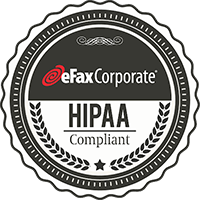Bring technologists together to discuss interoperability, and you’re going to hear a lot of acronyms, some words of wisdom, and a considerable amount of dissent.
That was the case at the 4th Annual Current and Future State of Interoperability, a panel discussion sponsored by eFax Corporate and hosted by HealthcareNOW Radio.
Indeed, there was little consensus on the first question asked by moderator Matt Fisher, an attorney with Mirick O’Connell. Fisher asked where APIs fit into current and future healthcare interoperability. “Connectivity is a big plus for APIs, giving healthcare organization the opportunity to expand their ecosystems,” said John Nebergall, vice president of Consensus. “But APIs are not going to solve your integration problems.”
Chris Muir, director in the Standards Division of ONC, agreed. “It’s not a full solution, but it’s helpful when patients need to access data from an ERHs or providers are using more than one EHR,” he said.
Dave Cassel, executive director of Carequality, saw things differently. “APIs are useful across the board,” he said. “There are challenges on the patient-access side, but they’re solvable. And giving patients more control over data access has benefits, including fewer HIPAA problems.”
Shifting the discussion slightly, Nebergall said the real issue is creating a way for patients to gather and exchange information in a way that’s useful to them. This is where technology other than APIs can be useful, providing a way to deliver information directly to patients rather than making them go from place to place to find it, he said.
FHIR’s semantic side
Asked about the Fast Healthcare Interoperability Resources (FHIR) standard, Cassel said while there are always arguments about any given standard, there’s a lot of support in the industry for it. ONC’s Muir concurred, saying that people are supporting it and talking about trying to use it. “We’re seeing a lot of adoption of open APIs based on FHIR,” he said.
But Nebergall said there are serious issues on what he called the semantic side of FHIR. “FHIR holds great promise, but there’s not full consensus,” he said. “We see the use of different coding systems with prior data normalization.”
Jeff Coughlin, senior director of federal and state affairs for HIMSS noted that ONC is asking what version of FHIR should be used and that he expects to see version specification in ONC’s Final Rule.
Cassel pointed out that version specification is not sufficient, that users must take a further step. “FHIR is, more or less, a transport standard, telling you how to get information from point A to point B. It doesn’t say how to define the payload in terms of the data set,” he said. “FHIR can do semantic, but the user has to specify. He or she has to go into Resources and say ‘Thou shalt use Terminology X.’ You can’t leave it unspecified, for example just saying ‘Send medication.’”
In part 2 of this post, we’ll report on the status of information blocking regulations and how organizations can prepare for broader information sharing, including state and federal regulations and moving away from traditional fax.











